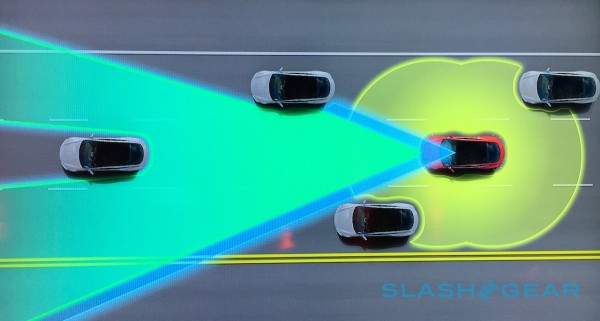
Autopilot: The Cure to the Distracted Driver or Tort on Wheels?
By: Brian D. Farrington, Staff Writer
We’ve all seen it: the texter, the emailer, the DJ driver. All around us, people seem to have more on their mind than the road ahead. In 2013, 3,154 people were killed as a result of distracted driving with another 421,000 injured[i]. What if these statistics could be a thing of the past?
The ads are everywhere, car manufacturer’s touting slogans that emphasize the ability of their car to avoid a collision. After all, the safest accident is the one that never happens. It started with cars that could scan the road ahead of you, and alert you if traffic was slowing down. Soon this evolved into systems that would actually apply the brakes if you just couldn’t be pulled away from that email or text. This technology, though, has finally hit its final form. . . autopilot.
As of October 14th, 2015, owners of the Tesla Model S (with the autopilot package installed) have the option to simply sit back and relax on the highway, by-way, or city street while their car does the thinking for them. Tesla, however, probably didn’t just have your average distracted driver in mind when they developed this software. “Autopilot” takes many of the controls away from the driver while the car actively scans the road for the safest possible route. It not only can maintain distance from other cars, but also switch lanes if need be. The technology goes beyond the simple driving aids and takes a stab at doing most of the work. Tesla has the intention of this being more like the autopilot system for an airplane rather than a $100k+ nap machine [ii]. What are the consequences though, if you do rely on this technology to steer clear of accidents and you end up with the front end of your shiny, new toy underneath the rear bumper of a jacked-up diesel truck? Who is at fault when your car fails to perform flawlessly?
There is unfortunate news for those seeking remedy in Pennsylvania, which may be good news for attorneys. According to the Center for Internet and Society provided by Stanford University, Pennsylvania legislators have yet to enact any sort of legislation that could steer the court toward an answer should a case come before them[iii]. Luckily, the court may turn to the actions of another state to guide them in the matter. California law specifically states that the operator of an autonomous vehicle is “. . . the person who is seated in the driver’s seat, or, if there is no person in the driver’s seat, causes the autonomous technology to engage”[iv].
The California statute, if applied universally, could possibly eliminate the defense that the manufacturer’s technology malfunctioned. An individual, acting as an operator, has a duty to others to ensure that should the technology fail, they regain manual control of the vehicle. The National Highway Traffic Safety Administration has issued some guidance on the issue, but most of it relates to the manufacturers of the vehicle, and the testing involved. They stipulate that manufacturers need to ease the public into this new technology and that, should fully autonomous cars hit the street, the operator needs to have a warning should the systems begin to fail[v]. This, at the very least, acts as a minor protection to those who may be harmed by self-driving vehicles, but provides no comprehensive or actionable remedy to the problem.
A void exists in U.S. and Pennsylvania law that must be filled. It is not hard to imagine that some time in the near future, one may be able to drive down the street completely disengaged from the process. The lack of federal and state laws to regulate this growing field of technology is disturbing to say the least, and too many “what if” questions remain to allow the laws of another state to give guidance on the issue. Addressed is the issue in most scenarios, where operator error is to blame, but what if the software malfunctions in such a way that a reasonable operator would lack the ability to react. Legislatures move mostly in reactive measures, unfortunate considering the implications of what could happen should your car decide to swerve into oncoming traffic because of a software malfunction. Autopilot in cars offers a glimpse of a brave new world, one where people may let go of the wheel and have no fears. One can only hope that governing laws exist soon to transition society to this refined driving experience.
[i] Distraction.gov, Facts and Statistics, http://www.distraction.gov/stats-research-laws/facts-and-statistics.html (last visited October 25th, 2015).
[ii] The Tesla Motors Team, Your Autopilot has arrived, teslamotors.com, http://www.teslamotors.com/blog/your-autopilot-has-arrived (last visited October 25th, 2015).
[iii]Gabriel Weiner and Bryant Walker Smith, Automated Driving: Legislative and Regulatory Action, http://cyberlaw.stanford.edu/wiki/index.php/Automated_Driving:_Legislative_and_Regulatory_Action (last visited October 25th, 2015).
[iv] Cal. Veh. Code § 38750 (2015).
[v] U.S. Dep’t of Trans. National Highway Traffic Safety Administration, “Preliminary Statement of Policy Concerning Automated Vehicles”, NHTSA 14-13, May 30, 2013